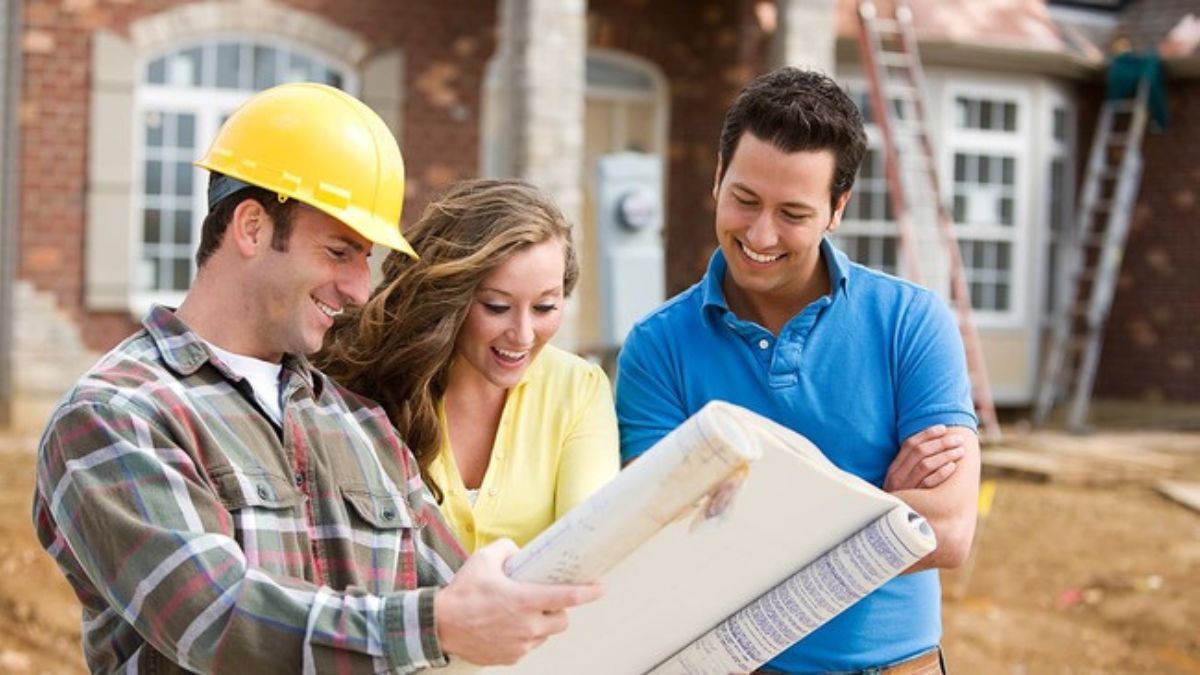CONSTRUCTION
Guiding First-Time Homebuyers Through the New Construction Process

Introduction to New Home Construction
Starting a homeownership journey often involves choosing between existing homes or new construction. New construction offers contemporary design, modern amenities, and customization options. However, this complex and overwhelming process can be overwhelming without proper guidance, making it crucial for buyers to have appropriate guidance. Engaging a professional partner, such as a builder sales brokerage, can significantly ease the process. These experts specialize in supporting buyers from the initial stages of selecting a plot to finalizing personalized home features. An expert in new construction provides peace of mind and an informed journey, making buying a home more enjoyable. New construction offers new infrastructure, energy-efficient technology, and contemporary layouts, allowing first-time buyers to focus on their home’s design. Experienced professionals guide the complexities, ensuring critical decisions align with the buyer’s vision and budget.
Understanding Financing Options
Financing a new construction home requires careful consideration and understanding of available options. New construction often requires dual financing approaches, including construction loans that cover home-building costs over a period and convert into permanent mortgages after construction. Understanding these options, including terms, interest rates, and repayment structures, is crucial for long-term financial planning. Comparing lenders and seeking pre-approvals is essential to comprehend borrowing potential and economic responsibilities. Engaging your builder’s preferred lenders can streamline approval, leading to optimized loan terms. With preparation and knowledge, financing becomes a structured process for a stress-free homebuilding experience.
Choosing the Right Location
Selecting the right location for a new home is crucial as it affects both its immediate utility and long-term value. Factors like proximity to work, schools, amenities, the neighborhood’s safety, community culture, and potential for appreciation can influence satisfaction. Analyzing neighborhood trends and evaluating different environments can provide valuable insights. Visiting potential neighborhoods at various times and engaging with residents can also provide insights into community activities and future growth. Balancing individual needs with future potential enhances the living experience and ensures long-term investment growth.
Collaborating with Builders and Architects
Choosing the proper architect and builder is essential when building a home since it affects satisfaction, timeliness, and construction quality. Ensure the builder is reliable, experienced, and recommended by previous clients. Check credentials, work samples, and industry accolades. Communicate effectively with professionals who translate your vision into the home’s design and functionality. Review contracts to ensure clarity in scope, timelines, and payment schedules. This provides a smoother building experience and aligns the project’s pace with expectations and standards.
The Construction Timeline: What to Expect
The construction of a new home involves a phased approach, including site preparation, foundation, framing, and finishing. Each phase requires coordination and planning and is influenced by factors like project scale, customization, seasonal conditions, and supply chain issues. Understanding these phases helps monitor progress and align expectations. Regular communication with the builder is crucial for maintaining a fluid timeline and managing expectations. Preparing for potential delays helps manage expectations and enjoy the building process.
Importance of Inspections
Inspections are crucial in the construction process to ensure safety and quality standards. These assessments are conducted by third-party inspectors at critical intervals, such as after foundation laying and before drywall installation. The inspections identify potential issues early, adhering to code regulations and maintaining structural integrity. A final walkthrough inspection is conducted at the end of the building process to address any remaining concerns. Working with professional inspectors guarantees your investment is protected, and your new home is constructed to high quality and safety standards.
Customization vs. Standard Features
New home construction allows you to customize your space to suit your style, from architectural design to interior finishes. This process will enable buyers to create a unique living space, such as a gourmet kitchen or luxury bathroom. However, bespoke features can bring higher costs. Careful budget management is crucial to align desired customizations with financial limitations and avoid over-expenditure. Balancing standard home features with unique custom elements can optimize comfort and individuality without exceeding budget constraints. Investing in long-term value features ensures your home reflects your style and is a sound investment.
Tips for First-Time Homebuyers
To avoid financial strain during construction, create a detailed budget that includes potential costs beyond construction, such as landscaping and furnishings. Utilize resources like state-sponsored first-time buyer programs for financial assistance. You may remain informed and involved throughout the building by actively participating in decision-making, communicating with builders, and visiting the site frequently. Document each process step, from contracts to receipts, to resolve disputes and provide a clear record for future reference. Maintaining an organized approach with the right strategy, resources, and expert guidance ensures a rewarding journey to homeownership.

-

 TOPIC3 months ago
TOPIC3 months agoExploring Fappelo: The Rise of a Unique Online Community
-

 TECHNOLOGY3 months ago
TECHNOLOGY3 months agoExploring the Impact of Shannon Swanick TPO on Modern Blogging
-

 CRYPTO5 months ago
CRYPTO5 months agoUnderstanding the Landscape of Crypto30x.com regulation: What You Need to Know
-

 CRYPTO5 months ago
CRYPTO5 months agoExploring the Benefits of Using Biitland.com Stablecoins
-

 TOPIC3 months ago
TOPIC3 months agoTop 5 Myths About Hypackel Debunked!
-

 HEALTH2 months ago
HEALTH2 months agoTop 5 Benefits of Using a Mansrufer for Your Daily Routine
-

 BEAUTY5 months ago
BEAUTY5 months agoCeylan Eye Cream Reviews: Transforming Tired Eyes or Just Hype?
-

 TOPIC2 months ago
TOPIC2 months agoThe Art of Expression: Analyzing Puppygirlxd Most Iconic Creations